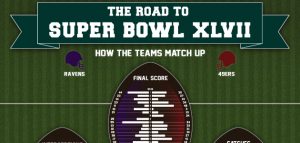If you’ve ever read a piece of content and spotted a hyperlink within a paragraph, then you’ve witnessed anchor text in action.
But there are differences between good use of anchor text and poor use.
Understanding these differences is a big part of search engine optimization (SEO) and can help you achieve more organic traffic over time.
To help break it all down, our knowledgeable Rock Content team has put together this guide with information and resources on how to properly use anchor text.
Ready to get started? Here we go.
- What is Anchor Text?
- Why Should You Care About Anchor Text?
- How to Properly Format Anchor Text
- Anchor Text Best Practices
- 6 Types of Anchor Text with Examples
- Is There an Ideal Number of Anchor Text Links for an Optimized Page?
- Wrap Up: Using Anchor Text for Better Search Optimization
What is Anchor Text?
Essentially, anchor text is the words that you see linked within a body of text.
In some cases, it can also be a linked image, such as a button or banner.
Anchor text is the primary way to link to other pages on your website or additional sites on the internet.
Some digital marketers and website designers also refer to anchor text as link text or a link label.
However, most simply call it anchor text even though all the terms are fairly interchangeable.
Why Should You Care About Anchor Text?
While it might seem as though anchor text is a fairly insignificant part of your overall website design, there are multiple reasons why you would want to pay close attention to it.
➤ First, there’s the user experience standpoint.
When an individual visits your page, it is important that they’re able to connect from one page to another using the proper navigation to find the information they’re looking for.
➤ Second, anchor text has a moderate role in the SEO process.
Google and other search engines use anchor text to determine page relevancy.
If your anchor text doesn’t match the page you’re linking to in some fashion, it could hurt relevancy, which is a big deal when it comes to achieving a positive rank in the SERPs.
What it all boils down to is that using the right anchor text can make a difference in both gaining the trust of visitors and sending key indicators about the relevancy of your page to search engine crawlers.
How to Properly Format Anchor Text
There are two methods to accurately format anchor text:
Automatically
With the automatic method, you’ll likely use a function in WordPress or whatever other platform your website is based on.
There’s no need to really explain that, as most people understand how this works already.
Just click on the “paper clip” icon and you’re all set.
Manually
Formatting anchor text manually can be a different story.
Generally, the coding behind a link looks something like this:
<a href=”https://www.rockcontent.com”>Rock Content SEO Tips</a>
In this example, the website address would be the target link you want a user to follow.
Between the brackets is your anchor text, which is the relevant keyword or phrase you’re linking to.
There are additional tags that can be added to indicate where the page should pop up when clicked — such as in a new window or tab — but that isn’t really relevant to the actual formatting of the anchor text itself.
Anchor Text Best Practices
The technical aspects aside, there are multiple best practices when it comes to formatting your anchor links appropriately.
Choose topics with a low keyword density on your page
This means avoiding any term that has a high density inside your content.
Why? Just like with using focus terms, keyword stuffing is possible with anchor links.
And you don’t want to get penalized for something so minor and easily fixable.
Choose a specific term to target and not something general
While it might seem tempting to use a click here or a contact us as a linked part of your call-to-action, it is usually deemed a poor anchor text practice.
The reason? It doesn’t give enough information about the page you’re linking to.
Thus, it makes it hard for search engine bots to understand what the linked content is all about.
Instead, be clear when using phrases or keywords within your anchor text.
Try not to make any link on your website look spammy
If you’re creating an outbound link to another website, make sure it is a legitimate page with solid information.
Website owners find themselves in trouble all the time for linking to pages that either don’t have the right level of relevancy or are already in trouble with Google for spam practices.
Remember to always err on the side of caution and ensure your outbound links are reputable before you put your stamp of anchor text approval on them.
6 Types of Anchor Text with Examples
Of course, there are different types of anchor text that you want to include within your content pages.
Here are the six most common options with examples of each one:
1. Exact Match
An exact match anchor text is when the target keyword you’re hoping to rank for is linked within the text.
For example, a page about Siamese cats linking the word Siamese cats would be an exact match anchor text.
2. Partial Match
With partial match keywords, only a portion of your target keyword phrase is used within the linked text.
To give you an example, if your primary keyword is Labrador Retriever and you link to retriever breeds, then you would be using a partial match anchor text.
3. Phrase Match
A phrase match anchor text would include your target keyword but link to a sentence or phrase about the overall topic.
As an example, using the target keyword pet treats and linking the words best pet treats for overweight dogs would be a phrase match anchor text.
4. Naked
With naked anchor text, there’s no keyword or phrase attached to the link.
A quick example of this would be www.rockcontent.com.
See how it is there with the full address? This is naked anchor text.
5. Generic
While there are certain times when you want to use generic anchor text, it is usually best to avoid it.
This is where the words click here or learn more are just generically linked.
While it can be a great call-to-action method, there are still more descriptive terms you can use for better SEO benefits.
6. Images
In some cases, you might want to link a button as an anchor text.
That’s where you would use an image file with the correct keyword as the file name.
Also, update the ALT tags to reflect your targeted keyword or phrase match accordingly.
Remember, search engines don’t see images, but they read these tags to discover context about a link.
Is There an Ideal Number of Anchor Text Links for an Optimized Page?
Now that you understand the different types of anchor text, let’s take things a bit further by discussing how many times you should use it within a piece of content.
While there is such a thing as going overboard, there is no set standard for what search engines are looking for when scanning your website for anchor links.
Instead, aim for adding anchor text where it seems most natural.
For example, talking about a specific topic that somehow relates to the current content a reader is consuming would make sense.
As would a call-to-action with an exact match target keyword link to a contact page.
When it comes to search engine optimization, the primary goal is to provide as much valuable and relevant content as possible. I
f you’re adding both internal and reputable external links that relate to the topic, then you’re going to be fine in terms of the exact number that you add.
However, just make sure it doesn’t look spammy or suspicious.
If it appears you’re trying to game the system by adding a bunch of junk links, then there’s a good chance Google will ultimately penalize you for the practice.
Wrap Up: Using Anchor Text for Better Search Optimization
Using anchor text is an excellent way to give users easy access to additional information about a specific topic, while also indicating to search engine crawlers what certain pages are about.
While there are some best practices and guidelines to follow, the process is both easy and effective in terms of implementation and usage.
Are you still looking for even more information about how to improve the search engine optimization of your website?
Rock Content’s SEO guide covers numerous must-know topics to get you on the right track.

![[WA] Ultimate Content Marketing Kit](https://rockcontent.com/wp-content/uploads/2022/08/Content-Marketing-Kit-750x200px.jpg)








